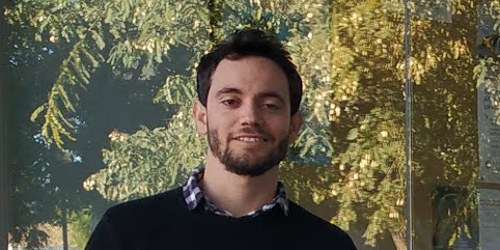Doctoral thesis lecture by Leonardo Ochoa Aday
25/01/2019
30th January at 12:00 in room C4-001 (EETAC), Leonardo Ochoa Aday will be defending his doctoral thesis entitled "Contributions to Topology Discovery Self-healing and VNF Placement in Software-Defined and Virtualized Networks"
Date: 30/01/2019 at 12:00
Room: C4-001, EETAC (how to arrive)
Author: Leonardo Ochoa Aday
Title: Contributions to Topology Discovery Self-healing and VNF Placement in Software-Defined and Virtualized Networks
Advisor: Cristina Cervelló i Pastor.
Abstract: Evolution of information and communication technologies (i.e. Cloud Computing, Internet of Things, 5G, among others.) has enabled a large market of applications and network services for a massive number of users connected to the Internet. Achieving high programmability while decreasing the complexity and costs has become an essential aim of networking research due to the ever-increasing pressure generated by such applications and services. However, this reality sets an almost impossible challenge to solve with traditional Internet Protocol (IP) networks.
Software-Defined Networking (SDN) is an emerging network architecture that could address the needs of services providers and network operators. This new technology consists in decoupling the control plane from the data plane, enabling to centralize control functions in a concentrated or distributed platform. It also creates an abstraction between the network infrastructure and network applications, which allows designing more flexible and programmable networks. Recent trends of increased user demands, the explosion of traffic and diverse service requirements further drive the potentialities of SDN to enable the introduction of new protocols and traffic management models.
This doctoral research is focused on improving high-level policies and control strategies that are becoming increasingly important given the limitations of current solutions for large-scale SDN environments. Specifically, three biggest challenges were faced during the development of this thesis, related to the processes of topology discovery, fault recovery and Virtual Network Functions (VNF) placement in software-defined and virtualized networks. These challenges led to the design of a set of effective techniques, comprising from network protocols to optimal and heuristic algorithms, intended to solve existing problems and contribute to the deployment and adoption of such programmable networks.
For the first challenge, this work presents a novel protocol, that, unlike existing approaches, enables a distributed layer 2 discovery without the need for previous IP configurations nor controller knowledge of the network. By using this mechanism, the SDN controller discovers the network view without incurring in scalability issues, while taking advantage of the shortest control paths toward each switch. Moreover, this novel approach achieves noticeable improvement with respect to state-of-the-art techniques.
To address the resilience concern in SDN, we propose a self-healing mechanism that recovers the control plane connectivity in SDN-managed environments without overburdening the controller performance. The main idea underlying this proposal is to enable real-time recovery of control paths in the face of failures without the intervention of a controller. Obtained results show that the proposed approach recovers the control topology efficiently in terms of time and message load over a wide range of generated networks.
The third contribution contained in this document combines topology knowledge with binpacking techniques in order to efficiently place the required VNFs. Looking for a suitable solution for dynamic infrastructures, an online heuristic algorithm with low-complexity is developed. Extensive simulations, using network topologies representative of different scales, validate the good performance of the proposed approaches regarding the number of required instances and the delay among deployed functions. Additionally, the proposed heuristic algorithm improves the execution times by a fifth order of magnitude improvement compared to the optimal formulation of this problem.

Comparteix: